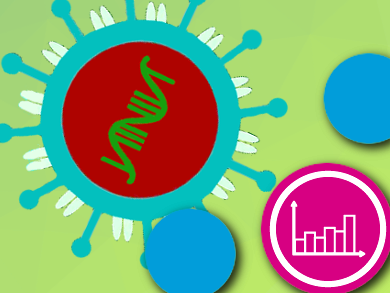We still don’t know everything about the coronavirus (SARS-CoV-2) causing the current COVID-19 outbreak, but research is progressing rapidly. We know, for example, that SARS-CoV-2 shares a strong homology with its better-studied cousin SARS-CoV, responsible for an outbreak of SARS (Severe Acute Respiratory Syndrome) between 2002 and 2003. MERS-CoV, another member of this genus, has caused the Middle East respiratory syndrome (MERS) first reported in 2012.
Most coronaviruses are known to infect only non-human species.
How Did the Coronavirus Get to Humans?
Zoonotic diseases such as those caused by coronaviruses are infectious diseases caused by viruses, bacteria, or other parasites that spread from animals to humans. These animals, called reservoir hosts, often are adapted to the virus. Often these are bats or fruit bats (flying foxes). The cross-species jump into humans of a virus often occurred via an intermediate species (referred to as a vector), which sometimes can carry the disease pathogen without getting infected. Examples of vector species include monkeys (Ebola, HIV), swine (H1N1), horses (Hendra virus).
Bats and fruit bats are a major reservoir of many strains of coronaviruses.

How Does a Coronavirus Enter the Human Body?
See update below

The most commonly reported symptoms include fever, dry cough, and tiredness. Other symptoms include difficulty breathing, sputum production, runny nose, pneumonia, diarrhea. The disease in severe cases may ultimately lead to organ failure. Some cases are fatal. Symptoms may appear 2 to 14 days after exposure. Long-term consequences are unknown.
Older people and those with pre-existing medical conditions such as cardiovascular disease, chronic respiratory disease, or diabetes are at higher risk for severe disease. Women seem slightly less vulnerable than men.
What Does the Coronavirus Do in Humans?
Coronaviruses (CoV) are viruses with an RNA genome surrounded by a nucleocapsid of helical symmetry.
SARS-CoV-2, causing the current COVID-19 outbreak, shares a strong homology with its better-studied cousin SARS-CoV responsible for SARS (Severe Acute Respiratory Syndrome).

ACE2 receptors are found in ciliated epithelial cells in the upper and lower airway and in type II pneumocytes in the alveoli in the lower airway. Type II pneumocytes produce lung-lubricating proteins important for lung function.
Four proteins, the spike, 3CLpro, PLpro, and RdRp, are essential for the virus. Therefore, therapeutics targeting one of these proteins are currently being tested as a possible treatment for SARS-CoV-2. The SARS-CoV-2 spike is significantly different from the SARS-CoV spike, especially in two regions when binding to ACE2. Therefore, previously developed antibodies and therapeutic peptides for the SARS-CoV spike cannot be used for SARS-CoV-2.
References
- Suggesting Potential Drug Candidates for Coronavirus,
ChemViews Mag. 2020.
Summarizing the current research and suggesting potential drug candidates for treating patients suffering from the 2019-nCoV acute respiratory disease
- Structure of “Spike” Protein in New Coronavirus Determined,
ChemViews Mag. 2020.
Results could help to develop a vaccine and antibody treatments - Spillover. Animal Infections and the Next Human Pandemic,
David Quammen,
W. W. Norton, New York, USA
ISBN-10: 0393066800
Also of Interest
- Collection: SARS-CoV-2 Virus
What we know about the new coronavirus and COVID-19 – articles published in ChemistryViews related to SARS-CoV-2
- LitCovid
Curated literature hub for tracking up-to-date scientific information about COVID-19 - Many publishers and other entities have signed a joint statement to ensure that COVID-19 research findings and data are shared rapidly and openly





A lot has happened in research since the beginning of March. We have decided to update Figure 2.
According to the World Health Organization (WHO), most people who contract COVID-19 only experience mild flu-like symptoms. For severe cases, the main point of attack seems to be the lungs, but other organs are also affected by COVID-19. It is still unclear how. ACE2 receptors are also present in the neural cortex and brain stem, the lining of the heart and blood vessels, the kidneys, the lower gastrointestinal tract.
Reference